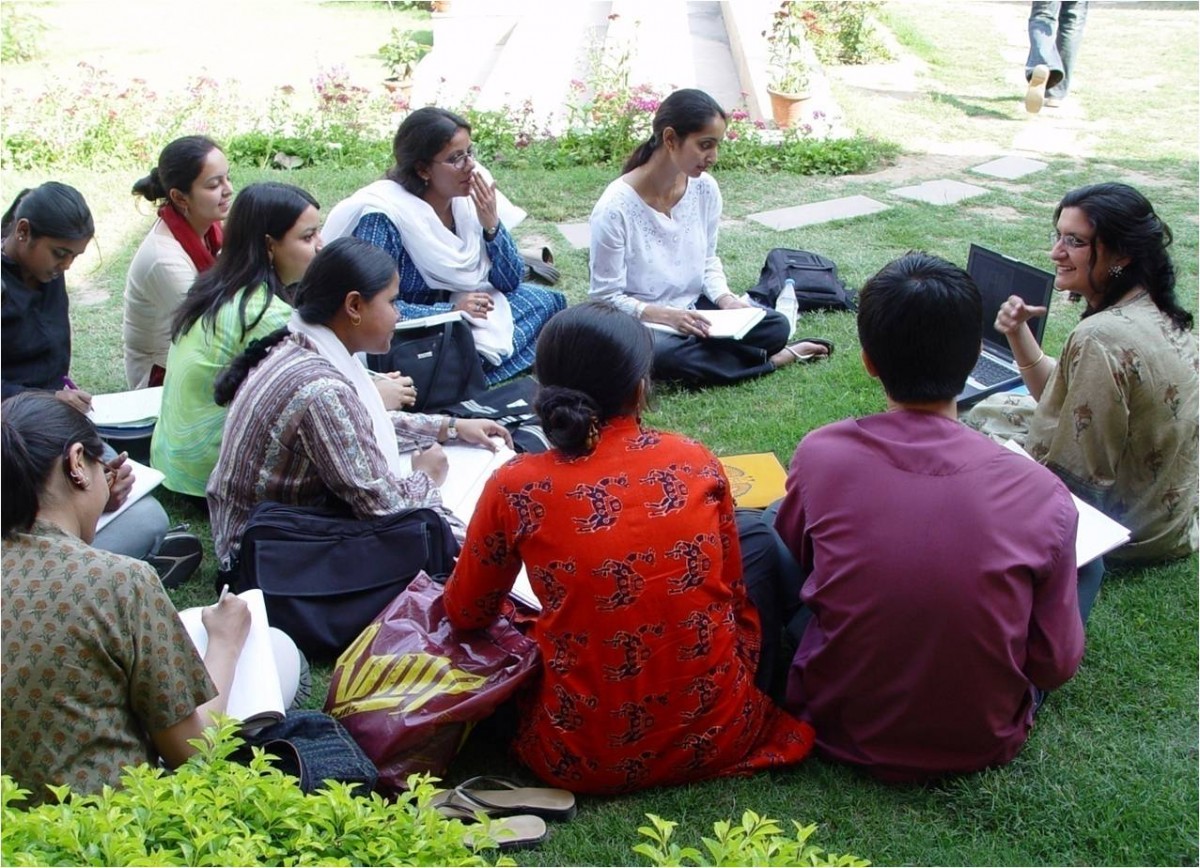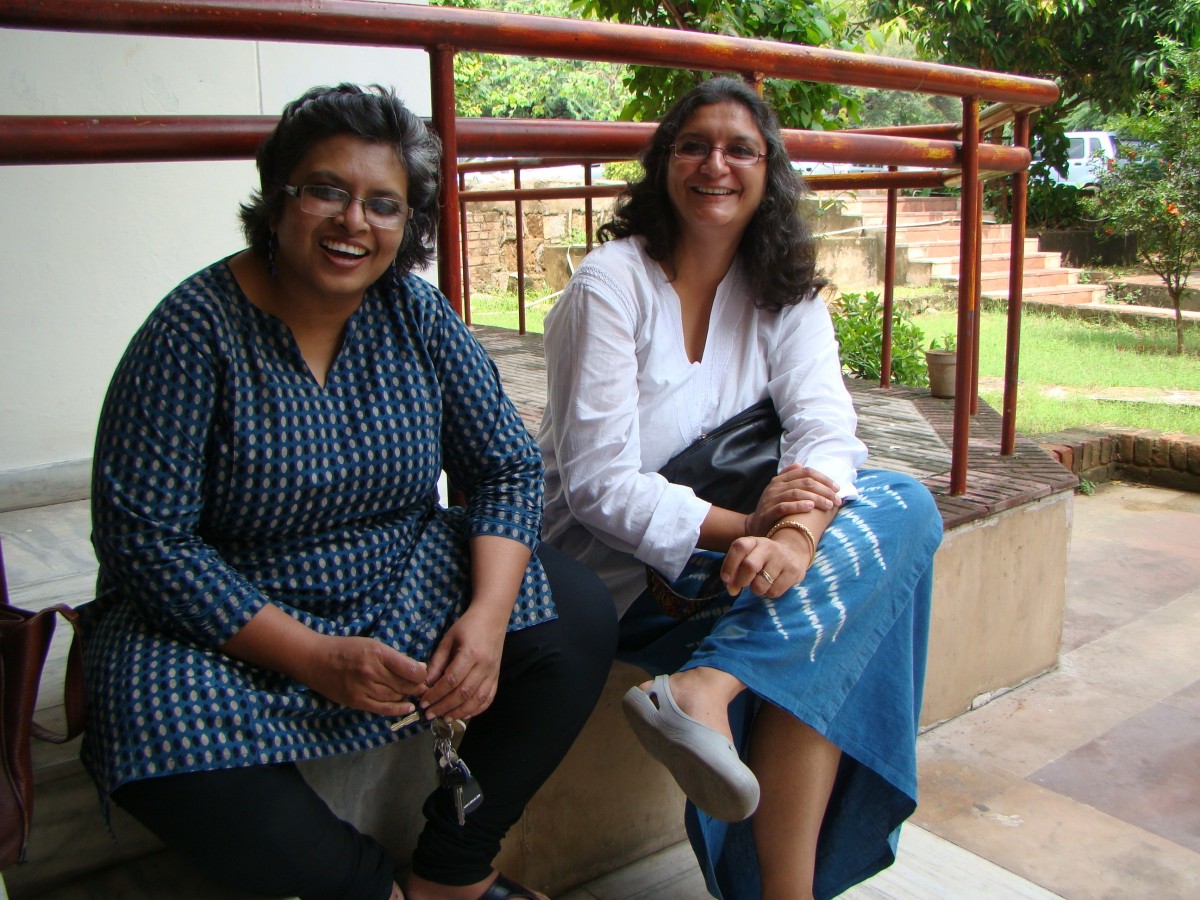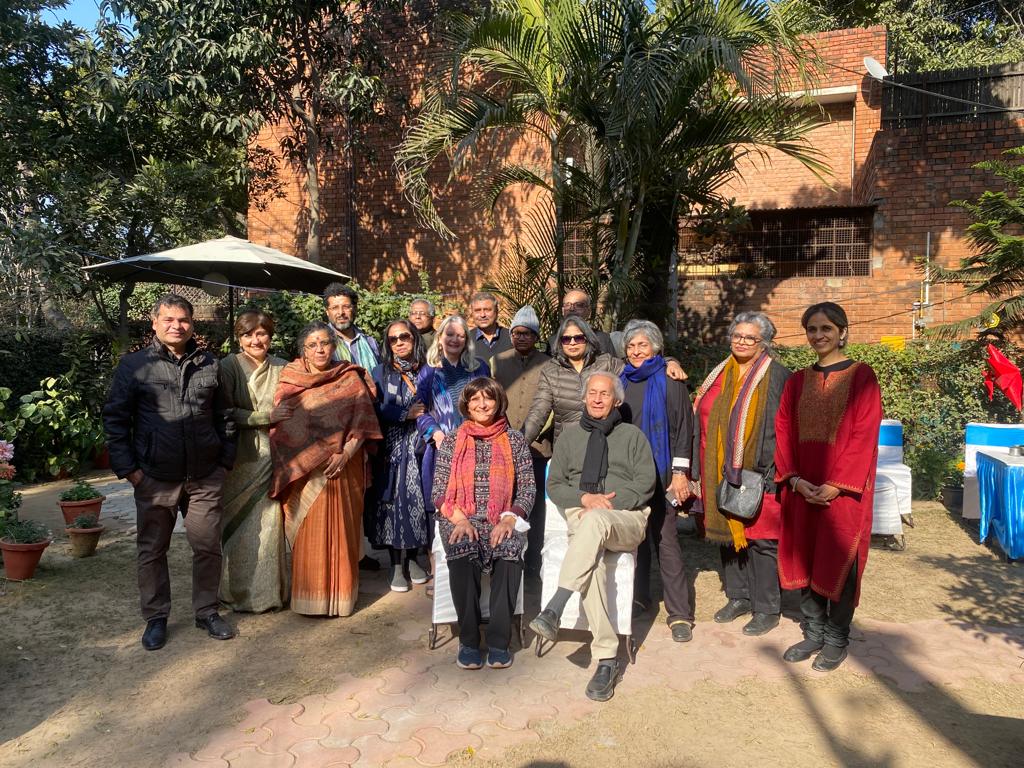Kavita Singh's Inspiring Research – and Memories of Her Unwavering Kindness – Will Live On
Inspirational, large-hearted, rigorous, lucid, deft narrator with the gift of elegant formulations – these are some of the adjectives that art historian, writer and curator, Professor Kavita Singh, garnered during her two-decade career as a teacher at the School of Arts and Aesthetics, Jawaharlal Nehru University. Two decades in which she made a name for herself through her path-breaking work in the area of Indian painting and especially museum studies, examining the politics underpinning the role of the latter as cultural institutions in colonial and post-colonial times. Nurturing a vast community of students from the MFA programme to the stage of MPhil and PhD in the process.
On July 30, after putting up a spirited fight against cancer for about two years, the former professor and dean of the School, who received the Infosys Prize 2018 for Humanities, breathed her last. She was 58.
“Just two weeks ago, she gave such a brilliant talk at the India Habitat Centre, that I unfortunately missed," remembers friend and colleague, Prof Shukla Sawant ruefully. She has known Kavita for over three decades – starting off as teacher-student (Kavita the teacher, Shukla the student, both almost the same age), becoming friends and later colleagues at the SAA from its inception. In her remembrance below, as told to The Wire, art practitioner and teacher Shukla Sawant remembers Kavita Singh the person, the multi-faceted professional, and the core of unshakeable integrity and quest that defined her.
§
I met Kavita in 1987.
She had just completed her Master of Fine Art (MFA) programme from MS University, Baroda (at that time, only a small number of universities offered post graduate degrees in studio practice or a specialised research degree in art history).
I had joined the newly instituted MFA programme at the College of Art, Delhi, after a stint of studying lithography at the Ecole des Beaux-Arts, Paris, and we had no one to teach us art history. It was Kavita who came to teach us.
Rather, we students had come to know of her and we literally chose her as our art history teacher! She was part of the Triveni Kala Sangam-Mandi House art world, not far from our college, where people associated with the arts would socialise.
I had never studied art history systematically before that. I have a distinct memory of sitting on the College of Art lawn, with Kavita in her best performative manner taking a class on symbolism. All of us, steeped in modernism, only understood symbolism as a 19th-century art movement in France, but she was trying to explain to us the larger idea of what symbolism meant. We students just fell in love with her. She was our age, actually a year younger than me.
Our paths kept crossing, because the art world was very small at that point. After my MFA, I started teaching at Jamia Millia. Kavita joined the National Institute of Fashion Technology as faculty and then pursued her PhD at Punjab University, Chandigarh, where she was a student of Prof B.N. Goswamy. She was very clear that she did not want to do her PhD abroad, because here was the finest scholar of Indian miniatures, and Chandigarh with its rich wealth of museums was right next door.
Then came our London sojourn later in the 1990s. Kavita had a Nehru Trust fellowship to research at the Victoria and Albert Museum and I was at the Slade School of Art on a Commonwealth scholarship. It was the first time we were using email to communicate with people in India. Kavita would come over to use email at Slade School because the V&A museum did not have a computer lab.
We also explored London together. Besides, she was a fantastic cook. I remember a lively lunch gathering at her sublet in Camden for which she cooked the most amazing meal. If I remember correctly, Subba Ghosh my contemporary at the College of Art and Slade School, as well as the novelist Ruchir Joshi were also there.
That was the time when Kavita became interested in museum collections and the phenomenon of the colonial museum. For us it was all completely new, for critical museum studies as a disciplinary field barely existed in India at the time. She would tell us all these fascinating details about how different museums across the world had come into being – Ananda Coomaraswamy was someone she was looking at closely – and right after that she got the Asia Society fellowship and went off to New York. I returned to Delhi.
Then both of us ended up getting a job at the School of Arts and Aesthetics that had just been set up at the Jawaharlal Nehru University (JNU). This was in 2001. It was a great opportunity to start from scratch. There were five of us – Jyotindra Jain, Kavita and I specialised in visual studies, and H.S. Shivaprakash and Bishnupriya Dutt in theatre studies, and we were given a year and a half to set up the entire programme. We worked out of one room for the first two years, even got the building built, furnished and equipped with appropriate audio-visual equipment.

Kavita Singh with students of the first MA in Arts and Aesthetics interdisciplinary programme of SAA, 2003. Singh is in the right corner. Photo: Special arrangement
We comprised the first generation of teachers using computers, CDs and projectors to teach art history, unlike those earlier, who used analogue slides or books. We all had to get acquainted with the technology. Kavita was completely comfortable with technology, actually on top of it, and could get any machine going.
Our approach was decided by a couple of factors. Most art institutions in India were of colonial vintage – the exceptions being the Fine Arts Faculty, MS University, Baroda (1950s) and Chitrakala Parishad, Bangalore (1960s). Also, 90% of what was produced in the visual field wasn’t by people who studied in art schools. So, we decided to create a theoretical programme, starting with an interdisciplinary programme which still continues.
Teaching in JNU was a learning experience as well. The students came from diverse social and economic backgrounds because of the university’s highly regarded deprivation point system. It was a university that attracted students from all over the world as well. We had to reckon with our own prejudices and course correct repeatedly, and having student representation in Boards of Studies and as members of Academic Councils was immensely helpful.
Ours was a small faculty initially, and despite the vast temporal and geographical span of the core areas of Art History, we had to teach everything. That meant learning to teach in an inter-disciplinary way (cinema studies came later).
The level of Kavita’s rigour was new to me as I was a practitioner and did not come from an art history background. It meant reading all the time and translating the material into appropriate power point slides. For Kavita, Mughal painting was an area of passion. The courses she taught were on Indian painting, but her research interest lay in museum studies. This was a new way of looking at what the museum meant in its journey from a colonial to a post-colonial context.
She completely upturned the belief that museums are neutral spaces of display. Even her students have gone on to produce amazing analysis, whether it is the National Gallery of Modern Art or the National Museum and many others. The politics of collecting, the whims and fancies of collectors – why they collect what they collect – was an important area of concern. Kavita worked very closely with Tapati Guha Thakurta, a leading scholar of museum studies. They had similar interests and did many projects together.
An extremely lucid writer and a performative speaker who had you hooked, Kavita could do a quick reading of a text and distil its essence. She would also describe painting in great detail, literally scrutinising a painting square inch by square inch. The fact that she was a literature student in BA (from Delhi’s Lady Shriram College) and knew how to narrativise art history was a great strength. She would tell me – I like to put art history into practice and curation is an important site of intervention. As a museum person that’s what we do, we make these narratives come alive to the public. She saw her role as that of a public intellectual.
Many of her lectures are available on YouTube. In fact, I send their links to people as a way of learning how to structure a lecture. There would always be a build-up, with her holding back the bits that were the most enticing for later, keeping listeners hooked till the very end when she would reveal something magnificent. Every one of her lectures poses a question, or has an interesting perspective.
Or take the practice of teaching art history through reproductions. We never get a sense of scale at all. Through Kavita’s wonderful power points, students would be able to see miniatures on a very large scale. The way she would arrange details, pulling out something she wanted students to see, brought the subject closer to her students. But she would also insist on museum visits to engage with works in all their miniature, material glory and critically scrutinise even the texts next to them on the walls for what they revealed.
Interestingly, in the initial years many students from the Centre for Historical Studies at JNU would take her course on Mughal and Rajput paintings and museum studies, then go abroad to specialise in art history. That too has happened. Our M.Phil, PhD took a while to take off and now offers specialised research degrees, in visual studies, theatre and performance studies or cinema studies. Kavita is leaving behind a number of scholars who have benefitted from her insightful research guidance. They are devasted by her departure.
Kavita had a way of involving her students in her various projects, especially her research into museums. So, many of them are now working on museum studies today, such as Deepti Mulgund, Akshay Tankha, Arnika Ahldag and Brinda Kumar. Many have literally travelled across the country mapping the history of museums, looking at what they were communicating in today’s context. Were these institutions playing the same role as the museum in colonial times or was it any different.
This was what the phenomenal work that she co-edited with Saloni Mathur years later, No Touching, No Spitting, No Praying: The Museum in South Asia (Routledge, 2014), was all about.
The other original work that comes to mind is Kavita’s Getty Research Institute Council Lecture, ‘Real Birds in Imagined Gardens: Mughal Painting Between Persia and Europe’, published in 2017. How elegantly she questioned the conventional linear arc of looking at Mughal painting by showing that Mughal painting had different phases of being in conversation with Persian and European styles, which sprang as much from court politics as from aesthetic concerns.
It was for her significant work in this area and in museum studies that she received the Infosys Prize 2018 for Humanities.

Shukla Sawant (L) and Kavita Singh. Photo: Special arrangement
Not just as a scholar and writer, Kavita was extremely dynamic in many respects. She would push people to do things, arrange conferences with international scholars, and ran several visiting scholar programmes supported by several international foundations. She was able to get substantial funding to build up the book collection of the School of Arts and Aesthetics and have scholars visit from across the world. She literally put the School of Arts and Aesthetics on the international map.
The fact that she has this huge group of students who specialised in various areas of Indian painting – whether it’s a Dipanwita Donde, who is working for the Max Weber Stiftung (MWF Delhi) in New Delhi, or Suryanandini Narian who looks at hand-painted photographs and now teaches in our school – speaks for itself.
Unfortunately, when it comes to museum recruitments in India, it is largely civil servants who run the show instead of a professional cadre of museologists. You need professionals, not people who will abide by the existing regime’s view of the world. It is the private museums who are hiring museum professionals but even there, it is not done the way it is elsewhere in the world. Private museums remain largely personality driven with hagiographic goals rather than being run as academic institutions that offer critical insights into art practices.
Sometimes, some government museum directors are able to activate these repositories but by and large their programmes shy away from any polemics and are therefore dry. They may collect material but don’t know how to make that art history come alive and are too wary of ruffling feathers to provide meaningful insights. Instead, they tip into hypernationalistic narratives veering on fiction. This was a subject of great concern to Kavita.
Moreover, Kavita was a person of strong convictions about democratic, academic processes regarding how a university should run. For instance, when she became Dean of the School of Arts and Aesthetics in 2017, JNU was going through a particularly difficult period. M. Jagadesh Kumar, the then Vice Chancellor simply did not believe in participatory, institutional ways of functioning. Here was a dynamic and internationally renowned scholar, one among a handful of women who had held administrative positions in the university’s history, whom he removed from deanship (in 2019) because she refused to endorse the fee hike that had been implemented without following the due process of deliberation and discussion through which JNU had functioned since it was established.
Kavita fought these malpractices through the courts of law and won. That tells you a lot about the grit she possessed, how incredibly brave she was. In December 2022, she resigned from the SAA to face her illness with the same grit and courage.

Entire SAA faculty at Kavita Singh's December 2022 farewell lunch. Photo: Special arrangement
Kavita had an active presence in so many circles that it opened up new ways of thinking and doing. She was able to harness the support of several international foundations because of which an array of international scholars have taught entire semesters at the School – John Clark, Griselda Pollock, Natalie Kampen, Avinoam Shalem, to name just a few.
Kavita was academically very rigorous and insisted on implementing what she had initially learnt at MS University Baroda, once famed for its Art History Department. Later, through her various academic collaborations, she succeeded in opening doors for younger scholars to conduct high quality research.
She was the kind of scholar, colleague and friend everybody hopes for in their circle. How does one sum up the journey of someone like Kavita, a brilliant scholar, writer, curator, teacher, mentor and institution builder?
Since yesterday, the one image that has been coming to mind is of our study tour to Lahore in the early 2000s, made possible by Salima Hashmi, the renowned Pakistani artist. This is when scholars across the border could actually engage in intellectual friendships without the fear of being blacklisted. I remember visiting the tomb of Nur Jehan with Kavita, looking at the breathtaking pietra dura work on the tomb and discussing the powerful role that women had played in supporting the arts. Kavita may have passed away physically, but all that she built will give immense pleasure to people for years to come.
As told to The Wire.
This article went live on July thirty-first, two thousand twenty three, at nine minutes past five in the evening.The Wire is now on WhatsApp. Follow our channel for sharp analysis and opinions on the latest developments.




